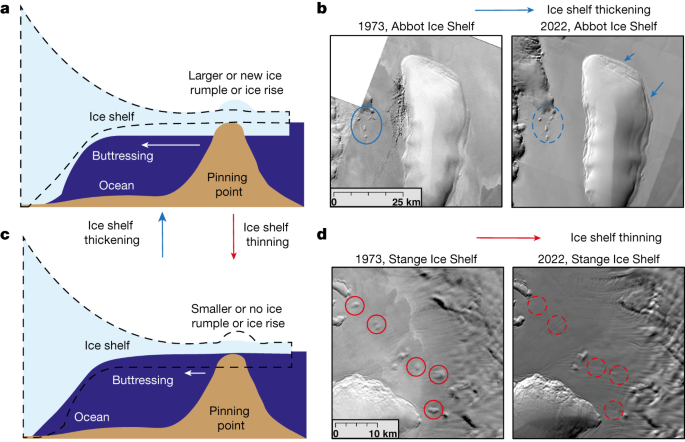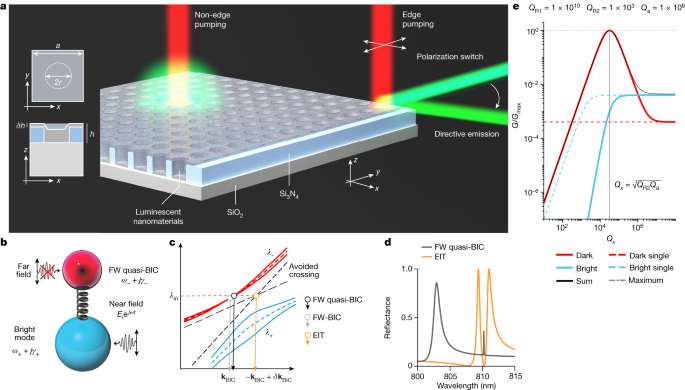2024-02-22 エディンバラ大学
<関連情報>
- https://www.ed.ac.uk/news/2024/barriers-against-antarctic-ice-melt-disappearing-a
- https://www.nature.com/articles/s41586-024-07049-0
1973年以降、南極の棚氷の固定解除が進む Progressive unanchoring of Antarctic ice shelves since 1973
Bertie W. J. Miles & Robert G. Bingham
Nature Published:21 February 2024
DOI:https://doi.org/10.1038/s41586-024-07049-0

Abstract
Mass loss of the Antarctic Ice Sheet has been driven primarily by the thinning of the floating ice shelves that fringe the ice sheet1, reducing their buttressing potential and causing land ice to accelerate into the ocean2. Observations of ice-shelf thickness change by satellite altimetry stretch back only to 1992 (refs. 1,3,4,5) and previous information about thinning remains unquantified. However, extending the record of ice-shelf thickness change is possible by proxy, by measuring the change in area of the surface expression of pinning points—local bathymetric highs on which ice shelves are anchored6. Here we measure pinning-point change over three epochs spanning the periods 1973–1989, 1989–2000 and 2000−2022, and thus by proxy infer changes to ice-shelf thickness back to 1973–1989. We show that only small localized pockets of ice shelves were thinning between 1973 and 1989, located primarily in the Amundsen Sea Embayment and the Wilkes Land coastline. Ice-shelf thinning spreads rapidly into the 1990s and 2000s and is best characterized by the proportion of pinning points reducing in extent. Only 15% of pinning points reduced from 1973 to 1989, before increasing to 25% from 1989 to 2000 and 37% from 2000 to 2022. A continuation of this trend would further reduce the buttressing potential of ice shelves, enhancing ice discharge and accelerating the contribution of Antarctica to sea-level rise.



